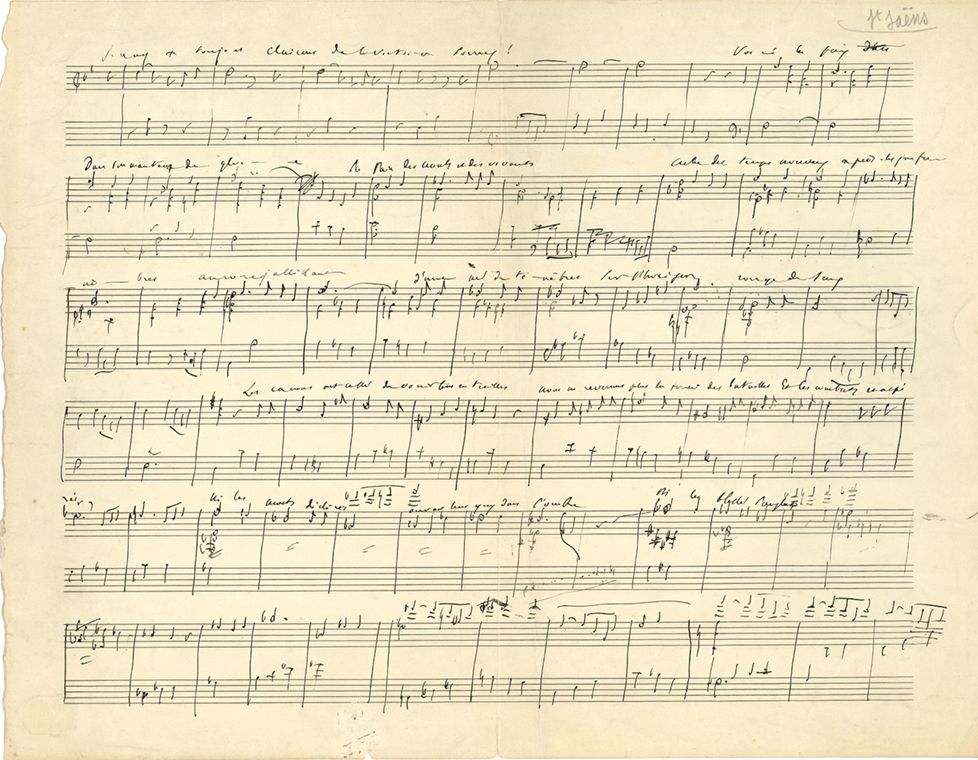Description
SAINT-SAËNS Camille (1835-1921)
AUTOGRAPHIC MUSICAL MANUSCRIPT for Hymn to Peace, [1919]; 2 oblong pages in-fol. (27 x 35 cm). First draft manuscript of this melody for voice and piano composed in 1919 to lyrics by surgeon Jean-Louis FAURE (1863-1944): "Sonnez toujours, clairons de la Victoire"... The Hymne à la Paix (op. 159) was composed in 1919, and published in the Supplément musical du Figaro of Sunday, May 9, 1920, and then by Durand, almost at the same time. The manuscript is written in a rapid handwriting, in black ink, on a 12-line Italian sheet, with the dry stamp of Lard-Esnault-E. Bellamy, in six systems of two staves, the upper staff containing the vocal line and the right hand of the piano. These 72 measures, in B flat, correspond to the first part of the work which counts in all 201 measures. On the back, one notes a draft of 13 measures, beginning of a piece for violin and piano, followed by some sketches.
You may also like
